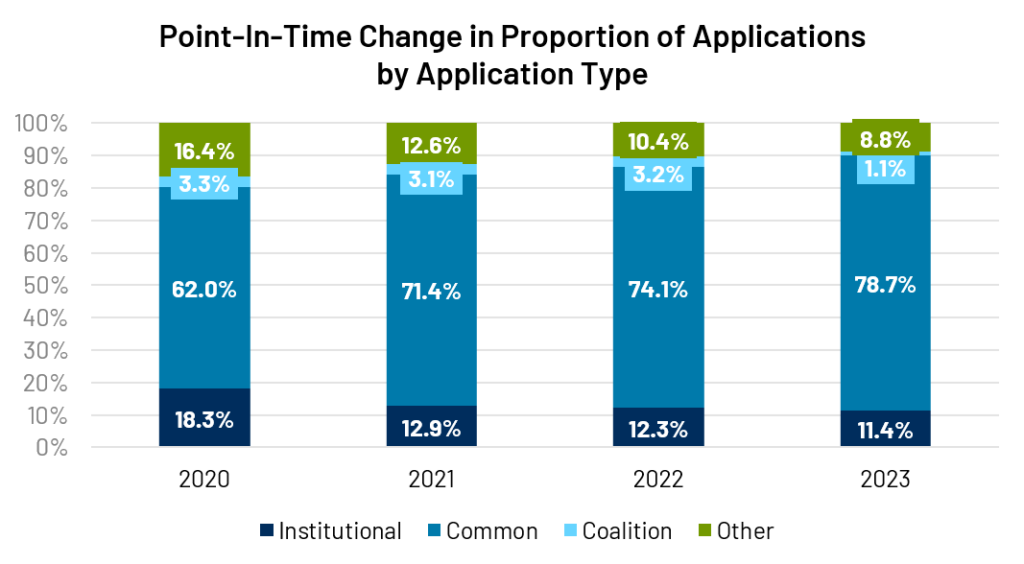The pandemic itself may be waning (let’s hope!), but its influence is still immediately apparent in enrollment cycles.
In this blog series, we are using MARKETview’s insights and data to share high-level trends about the “Covid Class” – the students whose entire college search journey has been dictated by the pandemic.
Our previous blog post focused on inquiries, so today, let’s review the next stage of the funnel: applications. Read on to see how they have changed among the Covid Class.
1) More students are applying with the Common Application
The Common Application continues to gain ground over institutional applications and others. This broad-serving application allows students to apply to multiple institutions – so while there are likely no more students applying, there are more applications being submitted.

This has serious implications on yield. Across all application types, overall yield sits at 18% – but applicants via the Common Application yield at a lower rate of 15%. (Coalition applicants yield at 22.6%, and applicants using institutional applications yield at 24.2%.)
With more applications per student out in the field, institutions will have to work more strategically to get students across the finish line.
2) Search plays an increasingly important role in Application strategy
With inquiry volumes dropping, it’s more important than ever to proactively seek out qualified students – and after diminishing in 2020, Search may be rebounding as the answer to that need.
| Point-in-Time Application Rate Among Search Students | |
| 2020 | 9.4% |
| 2021 | 7.6% |
| 2022 | 8.5% |
| 2023 | 8.7% |
For certain schools, Search students represent a population that’s likely to be admitted. In 2022, the admit rate for students sourced from Search was 71%, while the rate for students from other channels was only 53.8%.
While point-in-time Search-driven applications are up 9.9% since 2020, it’s important to note that yield on these students dropped from 15.0% (Entering Class of 2020) to 14.4% for the Entering Class of 2022
3) More students are applying without first inquiring
First-source applications (those students who didn’t inquire or indicate interest before applying – commonly referred to as “stealth applicants”) are on the rise – and show no indication of dropping to pre-pandemic levels.
This too has implications on other parts of the funnel – all the way down to yield. Delayed student engagement means less time to develop the all-important relationship with the students you wish to serve. Keep this in mind when prioritizing name buys and refining your outreach efforts.
| Proportion of First-Source Applications by Year | |
| 2020 | 20.5% |
| 2021 | 23.5% |
| 2022 | 22.9% |
| 2023 | 24.3% |
The pandemic’s effects don’t end with applications – our next posts in the “Covid Class” series will focus on admits and ultimate enrollment further into the cycle. Stay tuned!
Interested in Learning More?
Want to discuss any of these trends in further detail or get a sneak peek at how your institution compares to national trends or your peers’ performance?
